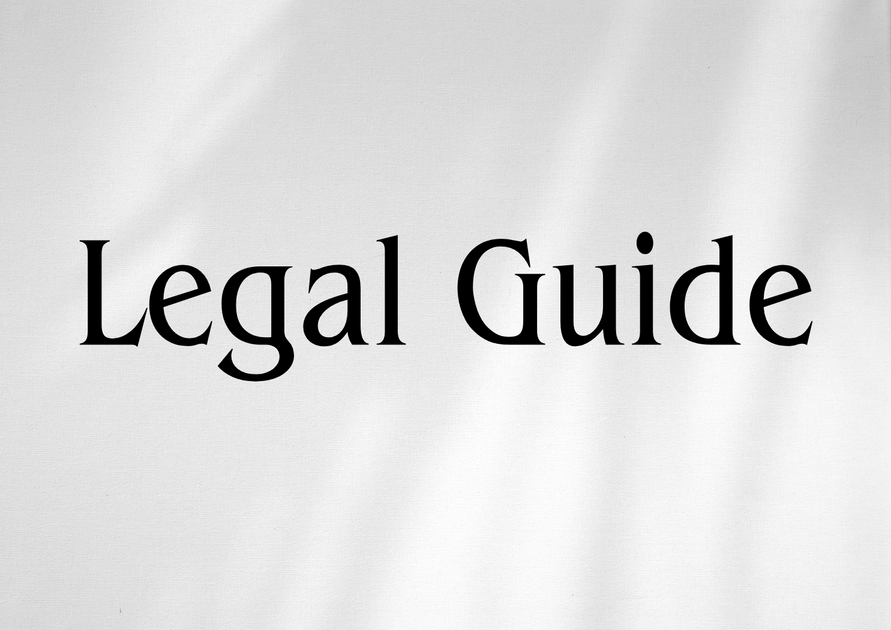Introduction
The United Arab Emirates stands at the forefront of digital transformation, with artificial intelligence (AI) now playing an increasingly pivotal role in multiple sectors—healthcare most prominently among them. As the UAE accelerates its vision under UAE Centennial 2071 and the National AI Strategy 2031, AI-based healthcare diagnostics promise vastly improved patient outcomes, efficiency, and cost-effectiveness. Yet, these advances bring complex legal challenges, regulatory uncertainties, and governance risks that demand careful navigation, including data privacy, patient safety, liability, and regulatory standards. Recent regulatory updates, including Federal Decree-Law No. 45 of 2021 on the Protection of Personal Data (PDPL) and related Cabinet Resolutions, clearly signal a tightening and maturation of the healthcare AI legal landscape, making compliance and risk management essential priorities for healthcare providers, technology vendors, and investors alike. This article, developed specifically for executive and legal professionals in the UAE, delivers a consultancy-grade analysis of the legal challenges associated with AI-based healthcare diagnostics, presents practical guidance rooted in the latest legislative updates, and offers actionable insights to facilitate robust compliance and responsible innovation.
Table of Contents
- AI Healthcare Diagnostics: Defining the Context and Legal Stakes
- UAE Regulatory Framework Governing AI in Healthcare
- Privacy Implications and the Personal Data Protection Law (PDPL)
- Liability and Accountability in AI-Driven Diagnosis
- Compliance Risks and Mitigation Strategies
- Case Analysis: Real-World Scenarios and Lessons
- Best Practice Recommendations and Looking Forward
- Conclusion – Proactive Legal Compliance for Sustainable Innovation
AI Healthcare Diagnostics: Defining the Context and Legal Stakes
Transformative Potential and Regulatory Complexity
AI-powered healthcare diagnostics involve the deployment of machine learning, deep learning, and data analytics applications to assess patient symptoms, interpret medical imaging, and recommend diagnostic pathways. In the UAE, these solutions can range from remote telemedicine platforms to advanced radiology interpretation and decision-support systems embedded within hospital infrastructure. Their widespread introduction, however, triggers a multitude of legal considerations, most notably:
- The regulation of medical devices and clinical software (including their approval and registration).
- Protection of sensitive health data under UAE privacy and cybersecurity laws.
- Determination of accountability and liability in the event of diagnostic errors or adverse outcomes.
- Adherence to quality and performance standards mandated by the Ministry of Health and Prevention (MOHAP), Department of Health – Abu Dhabi (DOH), and Dubai Health Authority (DHA).
Given the velocity of AI deployments and the regulatory complexity in multi-jurisdictional healthcare, a dynamic and rigorous approach to legal risk management is indispensable.
UAE Regulatory Framework Governing AI in Healthcare
Key Statutory Instruments and Guidelines
The UAE has enacted several federal laws, cabinet resolutions, and regulatory guidelines directly impacting the deployment of AI in healthcare diagnostics. Core legal underpinnings include:
- Federal Decree-Law No. 45 of 2021 on the Protection of Personal Data (PDPL): Establishes a binding privacy and data-protection framework applicable to all personal and sensitive health data processed in the UAE.
- Cabinet Resolution No. 21 of 2022 on the Regulation of AI Applications: Sets out registration, risk assessment, and compliance requirements for AI-based products and services.
- UAE Federal Law No. 4 of 2015 on Private Health Facilities: Regulates medical device use within licensed facilities, including digital health diagnostics.
- Federal Law No. 14 of 2014 on Combating Communicable Diseases: Imposes obligations on reporting and the management of communicable diseases, directly impacting AI diagnostics in public health emergencies.
- MOHAP Guidelines for Medical Devices and AI Software: Clarifies device registration requirements, performance validation, and post-market surveillance for AI tools.
Regulatory Evolution: Comparison Table
| Before 2021 | After 2021/2022 Updates |
|---|---|
| No comprehensive federal personal data protection law; sectoral data rules scattered across emirates | Introduction of PDPL (Federal Decree-Law 45/2021) and unified Cabinet guidance on AI, binding on all entities |
| Ad hoc device/software registration standards; variable emirate-specific conformity | Mandatory federal registration of AI diagnostic devices, common quality and conformity standards |
| No dedicated AI governance or ethical oversight | Cabinet Resolution No. 21 of 2022 establishes AI application risk classes, oversight, and reporting obligations |
Practical Insight: Regulatory Multiplicity
Unlike some single-jurisdiction countries, the UAE operates both federal and emirate-level healthcare regulatory regimes. AI diagnostic tool providers must therefore satisfy:
- MOHAP regulations for federal compliance
- DOH Abu Dhabi guidelines (e.g., licensing under the Tiqiyat platform for AI diagnostics in Abu Dhabi hospitals)
- DHA requirements (e.g., e-health software registration and cybersecurity protocols in Dubai)
Early legal advice and multi-jurisdictional compliance mapping are critical in planning AI diagnostics deployment.
Privacy Implications and the Personal Data Protection Law (PDPL)
Legal Requirements Under the PDPL
The PDPL (Federal Decree-Law No. 45 of 2021) establishes a robust data privacy regime, with particular scrutiny of health and genetic data as ‘special categories’ requiring enhanced protection. Key mandates include:
- Lawful Basis for Processing: AI systems must process health data based on explicit patient consent or clear legal justification (e.g., public interest, medical necessity).
- Data Minimisation and Purpose Limitation: Only data strictly necessary for the diagnostic process may be collected and processed by AI applications.
- Transparency and Patient Rights: Healthcare providers must disclose AI use in diagnostics, offer interpretable information about AI decision processes, and honor data access and erasure requests from patients.
- Security Measures: Implementation of technical and organizational measures (e.g., encryption, audit trails, role-based access) is mandatory.
- Cross-Border Data Transfers: Health data transfers outside the UAE are heavily regulated and require an adequacy decision or specific exemptions by the UAE Data Office.
Application Challenges: Navigating PDPL in the Healthcare AI Context
- AI Black Box Dilemma: Machine learning models often lack interpretability, making it harder to explain decisions to patients and comply with transparency requirements.
- Automated Decision-Making Restrictions: Article 30 of the PDPL places limits on fully automated processing, often requiring human review for healthcare decisions with significant patient impact.
Checklist for PDPL Compliance in AI Diagnostics
| PDPL Requirement | Compliance Actions |
|---|---|
| Explicit Consent | Implement robust, documented consent collection prior to deploying AI diagnostics |
| Data Minimisation | Configure AI systems to process only essential data; schedule periodic reviews |
| Transparency | Develop clear patient disclosures; provide explanation tools/summaries for AI outputs |
| Security Controls | Adopt encryption, intrusion detection, access control, and continuous monitoring |
| Data Transfer Restrictions | Conduct transfer impact assessments, obtain Data Office approvals if exporting health data |
Practical Insight: Privacy by Design
Healthcare entities integrating AI diagnostics should embed privacy into technology procurement and clinical workflows—privacy impact assessments (mandatory under Article 39 PDPL) must be carried out before implementation, with clear documentation for regulatory audits.
Liability and Accountability in AI-Driven Diagnosis
Who is Responsible When AI Gets It Wrong?
One of the most pressing legal uncertainties is the allocation of liability—when an AI-based diagnostic tool fails, resulting in patient harm or misdiagnosis, who is accountable? Scenarios may implicate:
- Healthcare Providers: Duty to exercise due diligence in adopting, validating, and overseeing AI diagnostics. Negligent reliance or insufficient clinical oversight can trigger civil or criminal liability under UAE Federal Law No. 4/2016 (on Medical Liability).
- Technology Vendors: Potential liability under consumer protection laws (Federal Law No. 15/2020 on Consumer Protection) and medical device conformity/defect obligations.
- Individual Practitioners: Licensed practitioners remain accountable for clinical decisions, regardless of AI involvement, unless clearly delegated or automated under approved protocols.
Federal Law No. 4 of 2016 – Medical Liability
This Law sets forth a strict, but nuanced, framework for handling claims of clinical negligence or malpractice:
- Article 5: Health professionals are obligated to adhere to approved standards and refrain from experimental practices without explicit patient consent and regulatory oversight.
- Article 16: Establishes criminal liability for gross negligence, fraudulent practices, or violation of medical device regulations.
- Article 24: Empowers the Higher Medical Liability Committee to investigate complex technical cases, increasingly relevant for AI-assisted processes.
Comparison Table: Accountability Structures
| Actor | Traditional Diagnostics | AI-Based Diagnostics |
|---|---|---|
| Healthcare Practitioner | Sole decision maker, directly liable for negligence | Still liable for relying on AI, unless robust governance and documentation show due diligence in oversight |
| Device Manufacturer | Liable for defects in mechanical devices | Liable for software bias, algorithmic error, faulty updates under consumer/product liability law |
| Hospital/Clinic | Duty of care in staffing, equipment maintenance | Duty to ensure regulatory compliance and risk management for AI deployment (vicarious liability possible) |
Consultancy Guidance: Allocating and Mitigating Liability
Best practice contracts between hospitals and AI vendors should allocate risks through indemnity, insurance, performance warranties, and clear incident reporting obligations. All deployments should include a transparent, auditable AI decision log to demonstrate compliance in case of regulatory review.
Hypothetical Example
Imagine a Dubai hospital uses an AI radiology platform that fails to detect an early-stage tumor, leading to delayed treatment. An investigation reveals the platform was ‘clinically validated’ overseas but not registered with the DHA or subjected to local testing. The hospital faces dual liability: regulatory penalties for failing to ensure proper registration and clinical liability for not exercising due diligence. The vendor could also face product liability exposure under the Consumer Protection Law. This scenario starkly highlights why proactive risk allocation and rigorous compliance checks are imperative.
Compliance Risks and Mitigation Strategies
Key Legal Risks for AI Diagnostics in the UAE
- Unregistered AI Applications: Use of non-approved or insufficiently validated AI diagnostics can result in administrative fines, suspension, or withdrawal of medical facility licenses (per Federal Law No. 4/2015 and MOHAP Circulars).
- Data Privacy Violations: Breaches of the PDPL attract significant financial penalties—up to AED 5 million in egregious cases—plus reputational damage and potential suspension of digital health operations.
- Patient Harm and Clinical Negligence: Actual or alleged harm flowing from flawed AI recommendations could trigger civil litigation and criminal liability, with particularly high risk in high-stakes domains (e.g., oncology, cardiology).
- Lack of Transparency or Patient Involvement: Inadequate patient communication regarding AI use may lead to consent disputes and regulatory censure.
- Cross-border Data Compliance: Unauthorized data transfers undermine compliance with Cabinet Resolution No. 16/2022 on Sensitive Data Transfers, risking legal action and operational restriction.
Structuring an Effective Compliance Program
Healthcare operators and technology suppliers should implement a comprehensive legal compliance program, including:
- Regulatory Assessment: Conduct multi-jurisdictional review to determine applicable laws and regulations (MOHAP, DOH, DHA).
- Risk-Based Validation: Undertake clinical validation studies and regulatory submissions for AI diagnostic tools; maintain detailed validation records for audits.
- Internal Policies and Training: Develop and enforce clinical AI use policies, including patient disclosure templates, redress procedures, and staff AI literacy training.
- Incident Reporting and Redressal: Designate rapid response protocols for suspected AI system errors, ensuring timely notification to regulators and affected patients.
- Cybersecurity Controls: Align with National Cybersecurity Authority guidelines; encrypt health data, monitor networks, and conduct penetration testing.
- Insurance Coverage: Secure tailored professional indemnity and cyber liability policies covering AI-specific risks.
Suggested Visual: Compliance Process Flow
Proposed placement here: a process flow diagram mapping pre-market registration, patient disclosure, ongoing monitoring, and incident management steps for AI diagnostics compliance in UAE healthcare environments.
Table: Penalty Comparison Chart
| Violation | Primary Law | Potential Penalty |
|---|---|---|
| Using unregistered AI diagnostic tools | Federal Law No. 4/2015 | Fine up to AED 1 million, suspension or closure of facility |
| Health data privacy breach | PDPL (Decree 45/2021), Cabinet Resolution No. 21/2022 | Up to AED 5 million per violation, possible criminal referral |
| Failure to obtain patient consent for AI-based diagnostics | Federal Law No. 4/2016 | Clinical negligence liability, revocation of medical license |
Case Analysis: Real-World Scenarios and Lessons
Case Study 1: International AI Tool Deployed Without Local Validation
An Abu Dhabi private hospital partners with a US-based AI vendor to implement a diagnostic imaging tool. Despite high efficacy reports abroad, the hospital fails to undertake supplementary local validation required under DOH guidelines. Within months, multiple incidents of diagnostic variance are reported, prompting an investigation by the Abu Dhabi Health Department, which suspends the hospital’s license to deploy AI diagnostics until compliance measures are complete. Legal takeaways include:
- International performance data does not suffice—local clinical validation is a regulatory must.
- Healthcare organizations must maintain comprehensive, up-to-date regulatory submissions, and ensure technology partners are contractually obliged to facilitate compliance processes.
Case Study 2: Data Breach via Unsecure AI Integration
A Dubai clinic uses a cloud-based AI platform for remote dermatological diagnostics. Insufficient endpoint security leads to a breach—patient photos and diagnostic histories are leaked. DHA and MOHAP investigators cite violations of PDPL and cybersecurity protocols, levying significant fines and mandating third-party cybersecurity audits. Lessons learned:
- All patient-facing AI integrations must undergo robust security reviews in line with UAE National Cybersecurity Authority standards.
- Cyber risk insurance and regular penetration testing are essential risk mitigation mechanisms for digital health operators.
Practice Point: Hypothetical ADR (Alternative Dispute Resolution) Scenario
A patient alleges harm due to an AI diagnostic error. Hospital management initiates mediation under the UAE’s alternative dispute resolution framework, offering redress and corrective measures to resolve the issue pre-litigation. This strategy, supported by transparent records and incident logs, achieves a confidential settlement and regulatory closure—demonstrating the practical value of pre-agreed ADR clauses in healthcare-AI contracting.
Best Practice Recommendations and Looking Forward
Governance, Risk, and Compliance (GRC) Toolkit for UAE Healthcare AI
- Legal Horizon Scanning: Establish a process to monitor and review evolving UAE laws, circulars, and authority guidance, as Cabinet Resolutions and regulatory notices frequently update obligations.
- Privacy and Security by Design: Integrate PDPL-mandated privacy safeguards at the procurement, design, and deployment stages of all AI diagnostic implementations.
- Human-in-the-Loop Oversight: Maintain human oversight of all automated diagnostic decisions, with detailed documentation accessible for audit or patient review.
- Stakeholder Training: Deliver regular legal and technical training to medical, technical, and administrative personnel on regulatory updates and AI governance practices.
- Contractual Clarity: Draft detailed contracts with technology vendors, covering risk allocation, support, incident response, ongoing updates, and liability caps related to AI performance.
- Audit and Review Protocols: Schedule periodic compliance audits against MOHAP, DOH, and DHA standards—and immediately address identified gaps.
Strategic Outlook for 2025 and Beyond
Driven by the twin imperatives of innovation and regulatory robustness, the UAE will likely continue to elevate the compliance bar for AI healthcare diagnostics via incremental legislation, sectoral guidance, and increased enforcement. Market entrants and established healthcare entities alike must adapt with agility—proactive legal compliance, continuous monitoring, and board-level oversight of AI strategy are now table stakes in this rapidly maturing sector.
Conclusion – Proactive Legal Compliance for Sustainable Innovation
The adoption of AI-driven healthcare diagnostics in the UAE holds immense promise, with the potential to transform patient outcomes and cement the nation’s position as a global leader in smart healthcare. However, this promise is matched by significant legal and regulatory challenges. Federal Decree-Law No. 45 of 2021 (PDPL), Cabinet Resolution No. 21 of 2022, and corresponding health authority protocols have set high standards for data privacy, liability management, and clinical compliance. Only those organizations that rigorously map, monitor, and manage their legal obligations—supported by contractual best practices, advanced technical controls, and a culture of continuous legal education—will achieve sustainable and competitive AI-led healthcare growth in the UAE. As the legal landscape continues to evolve in 2025 and beyond, early engagement with legal counsel and a risk-based compliance approach will be the hallmark of successful, future-proof healthcare innovation in the Emirates.



